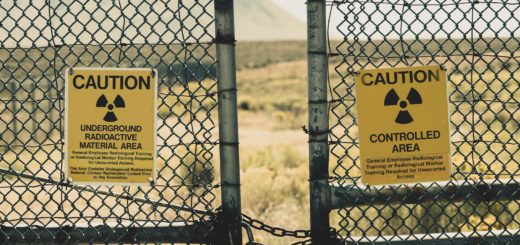Geotechnical Investigation Guide
A rite of passage for a new geotechnical engineers is the transition from compaction and concrete testing to their first geotechnical investigation. During the time spent doing compaction and gaining experience, a geotechnical professional should now be confident in identifying soils in the field quickly visually and by feel. Generally, there are three stages to a geotechnical investigation, the preparation (or proposal stage), the drilling, and writing the report. Most often an investigation is performed before a building has begun construction to determine the most suitable foundation type. This article will cover the preparation and drilling stages of a geotechnical investigation for a proposed building.
Preparation
Generally, a geotechnical investigation begins with a request for proposal (RFP) from the potential client. Some RFPs will indicate how many boreholes are required and where they are to be placed, which makes your job easier. However, most RFPs do not provide such guidelines, which is actually preferable to me. By placing boreholes where you see a need for them you are exercising your engineering judgment and gaining valuable experience. Your first geotechnical investigation will probably be handed to you from a more experienced engineer who has completed the proposal stage and the client has accepted the offer. For clarity, I will cover the process.
Planning the Boreholes
First, you will need a site plan showing the extents of the proposed structure as well as drawings showing how many floors and basement levels it has. A building with basement levels will need the depth of the basement added onto the borehole depths you have deemed necessary because that soil will not be relevant to the building. The number of stories the building has is also important because a tall, heavy building will likely require pile foundations. The heavier a building is, the deeper the piles have to go.
As the investigating engineer, it is your responsibility to determine the soil strata beneath the building and provide friction and end bearing values to the foundation design engineer. With that in mind, make sure you are generous with the borehole depths, especially when you are learning. Make an estimate of how deep you think the boreholes should be, then ask a senior engineer for confirmation. That is a great way to learn.
Evenly space the boreholes inside the building footprint using the site plan. Generally, I like to keep the boreholes approximately 15 m apart, but occasionally space them closer together or further apart depending on the building and the expected loads.
Planning the Lab Tests
An important part of a geotechnical investigation is laboratory testing. By looking at the building you should be able to have a pretty good idea of what kind of foundation it will require as well as how deep the foundations may be. Every laboratory program for a geotechnical investigation should include moisture content testing on every sample collected, Atterberg Limits testing on near surface clays, and sulphate/resistivity testing on the various soil strata. Click here for an explanation of various laboratory tests, and why they are carried out. Other lab tests may be required but are usually on a case to case basis.
Preparing to Drill
The job has been accepted, the borehole depths and locations have been planned, the drillers have been notified, locates have been completed and site access has been granted. Now, it’s almost time to drill. To make things easier on yourself, prepare a “drill kit” for yourself. The following list of items can find a permanent home in your drill kit. You can use them on every job:
- A large resealable and tough box to hold all your supplies and function as a workstation if necessary
- A pocket penetrometer to field test auger cuttings
- A sturdy kitchen knife
- Several pens
- Several sharpies
- Borehole logs
- Small sample bags
- Large bags
- Personal Protective Equipment
- Earplugs
- Spray paint
- Measuring tape
The following two items are project-specific and very important. You will need to replace these every time:
- Locates
- Borehole plan
- It is useful to label your sample bags before drilling. I label mine with project number, borehole number, sample number, and sample depth.
In the Field
You’re at the site early, you’ve got your fully stocked drill kit complete with locates, the borehole plan, and you’re waiting for the drillers to show up. Great start. A good practice is to start marking out the boreholes with spray paint and your borehole plan to speed the drilling process. The drillers are in no rush as your company is paying them for their time. Expediting the process makes you look good and keeps your boss happy to be saving money. When the drillers arrive you should hold a quick meeting to discuss the site, number of holes, locations, hand them the locates, discuss safety and fill out any safety forms required by your respective companies. Be polite and joke around with them a little. They can sometimes give you a break on supplies used or time spent if they like you, saving your company some cash.
Drilling
When you’re done with the safety meeting, indicate to them the first borehole and wait for them to park the drill rig and get set up. Bring your vehicle close to the rig, preferably no closer than 15 feet. Drillers like their space. Set up your truck so the back end of the truck is facing the drill rig. Open the tailgate, and layout your drill kit. The drillers will begin drilling while you are doing this and will likely be done by the time you have laid out your kit.
When you turn around the auger will be out of the hole and leaning, waiting for you to take a sample. At first glance, the soil will look uniform. This is due to the auger spinning it against the sides of the hole. Here’s where the kitchen knife comes in. Cut a thin strip off the auger from top to bottom. This gives a clear view of the soils the auger has drilled through. Describe each soil type you see on your borehole logs, using field identification methods you have learned. Now measure the thickness of all soils types described and record it in the borehole logs.
Sampling
Now, take a sample from each soil type on the auger, making sure to label each sample bag with the proper information. When taking grab samples from the auger, make sure you cut off the outside of the sample with your knife, to provide the lab an uncontaminated sample. Once complete, tell the drillers you are done with the auger. It is good practice to perform a Standard Penetration Test (SPT) after each auger flight, to obtain soil strength information, as well as some less disturbed samples. During the SPT, make sure you also count the blows for each 150 mm. I’ve met a few drillers who threw me a set of numbers not even close to what I had counted.
Once the test is complete, record the depth and number of blows for each 150 mm. Collect the sample from the driller, making sure to not include any slough which may be inside the sample tube. Simply repeat this process (grab sample, SPT sample, grab sample, …) for each borehole to the desired depth.
Return to the Office
With the haul of soil samples and borehole logs in tow, return to home base. It can be a great learning opportunity to ask a senior lab technician to go through some samples you may have had trouble identifying in the field and asking for their input. You will learn faster this way, and the lab staff will appreciate your willingness to learn and ask for help.
Once you feel confident in your soil identifications, talk to an engineer about what samples he wants tested. Generally, you want to test for sulphates and resistivity across all soils at multiple depths as this affects concrete/steel types to be used in foundations. Atterberg limits tests should be performed on near-surface clays to determine their swelling potential. Once the lab tests have been ordered, the samples delivered, and the engineer is happy with the progress, your job is done. Writing the report can now begin.



Hi,
Link to the laboratory tests does not seem to be working. Could you please re-link it
Thanks!